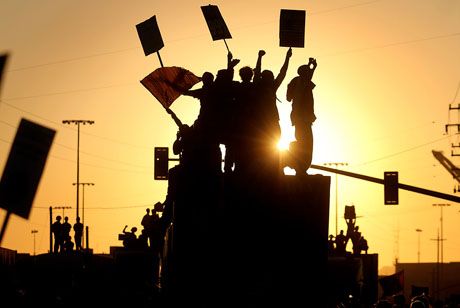What we think
You are here
Working-class organizing

February 13, 2012
From the Occupy movement, to anti-cuts organizing, to picket line support, there are recurring debates about how to harness the power of workers in the fight against austerity.
Some dismiss the ability or willingness of workers to resist, sometimes with reference to the trade union leadership that is often hesitant to lead struggles. In the lead-up to the January 17 anti-cuts demo in Toronto, some activists on the left used their criticism of the labour leadership as an excuse to bypass the membership, counter-posing the defence of public services with those who provide them, and substituting small “radical” actions by a minority for mass organizing among working-class people. But it was mass organizing over the last year that changed people’s consciousness against Ford, and forced city councillors to vote against Ford.
Others recognize the need for economic resistance to fight back against the 1%, but impatiently substitute themselves for workers’ self-activity. During the Occupy movement in Vancouver, some activists tried to shut down the ports on behalf of the workers, which allowed the trade union bureaucracy to distance itself from the movement and limit the potential of workplace occupations.
Some have drawn the conclusion that the trade union bureaucracy is the only impediment stopping spontaneous radical actions by the rank and file. The flip side of dismissing workers as inherently passive is to see rank-and-file workers as inherently radical, being held back only by a monolithic trade union bureaucracy.
For socialists, the self-activity of rank-and-file workers is the key to change, because of their strategic location in the economy: when they go on strike, the profits of the 1% come to a halt. The trade union bureaucracy, by virtue of its position of arbitrator between workers and bosses, vacillates between concessions and the need to reflect its members’ demands.
There can be splits between a right-wing and a left-wing trade union leader, which opens up room for rank-and-file militancy—like the fight to elect the Unity Team at the recent convention of the Ontario Federation of Labour and the labour-led mobilization to London. But this will not guarantee immediate radical action. Consciousness changes through the process of struggle, when workers gain the confidence and experience to make bold collective action.
Real radical action is when masses of ordinary people enter into activity, changing the world and themselves in the process. There are no shortcuts or substitutes to building rank-and-file activity.
Section:
Topics:
- Log in to post comments










